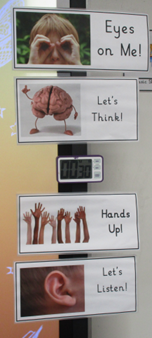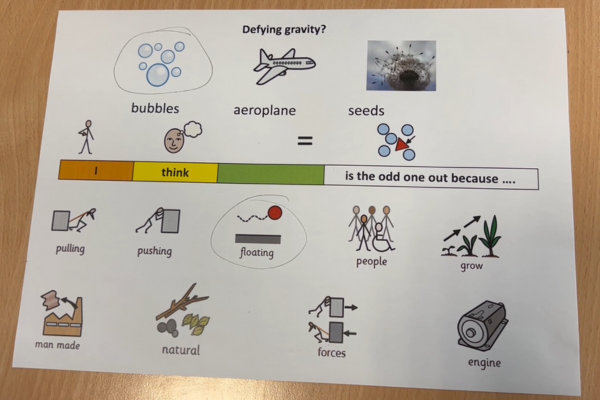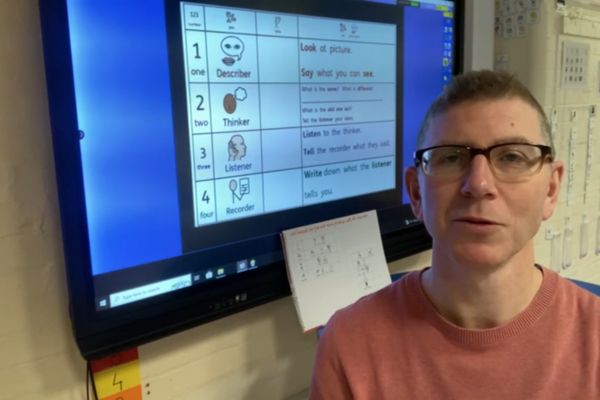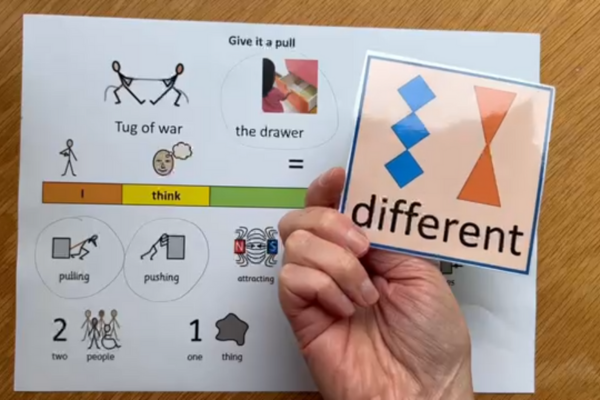Explorify for Inclusion: Improving the quality of thinking and talking
Looking for ideas and strategies to help you capitalise on the power of dialogue?
Our top tips
1. Children need thinking time to process new information and formulate their own ideas before they are invited to talk to a partner or group. Providing a visual timer can help ensure that children (and adults) do not feel rushed.

2. We want children to progress from single word answers towards using sentences. One of our experts describes how children were able to add detail to their oral responses when they provided them with thinking sheets (mats) for Odd One Out activities. Hear their story and read the case study.

"Every child can explain their ideas in a sentence"
Key outcomes for children
Communicating ideas in sentences
Recording of ideas with adult support
Read the case study for more details
3. Some children need support becoming confident with turn taking, teamwork and regulating their emotions. One of our experts describes how they gave children specific roles when they were doing Explorify Odd One Out activities so that they could improve these important skills. Hear their story and read the case study.

"Children could communicate with their peers and became more independent"
Key outcomes for children
Increased independence
Increased flexibility in less familiar situations
4. Several of our experts found that children were more confident listening to adults than listening to other children. One of them describes how they used sentence stems and same/different cards to develop children's listening skills. This enabled children to compare their ideas to those of a peer. Hear their story and read the case study.

"Children listened more carefully to each other"
Key outcomes for children
Improved listening skills
Being able to compare their ideas to others
5. When you are creating a talk culture in your classroom, it can be helpful to agree to some ‘rules of talk’ as a class. These can be displayed and reviewed regularly. Some rules could embed Explorify ideas, such as:
‘We share all possible ideas because more than one could be correct.’
6. To support children regulate themselves in discussion activities, each child can be given a small number of counters. They spend one of their counters when they contribute to the discussion. The limited number of counters encourages children to think about when to speak. An alternative could be a small number of bricks to build a tower to record their contribution to the class discussion.
7. Use agreed actions for communication. For example, children could put up their hand to show they agree with what another child is saying. They could place one fist on top of the other if they want to say something about it and build the conversation.
